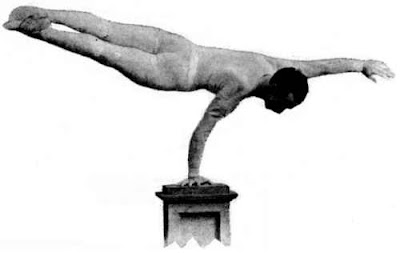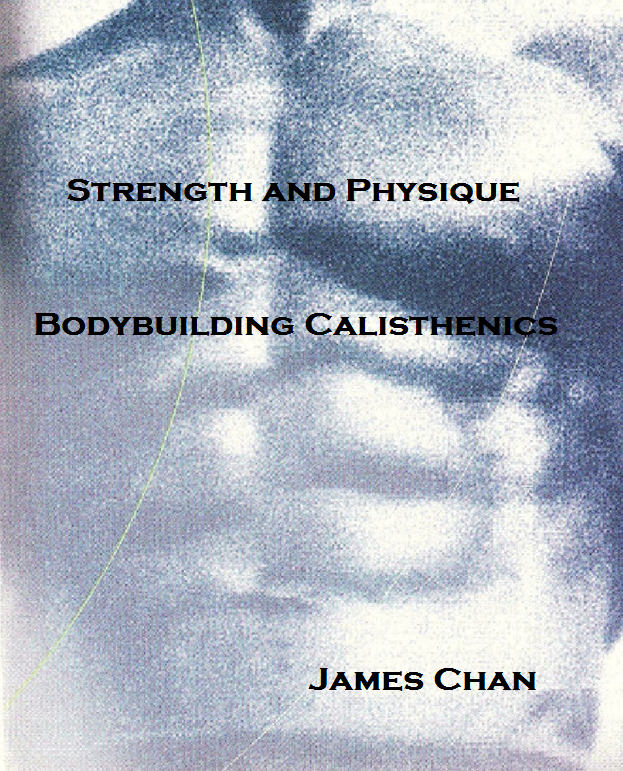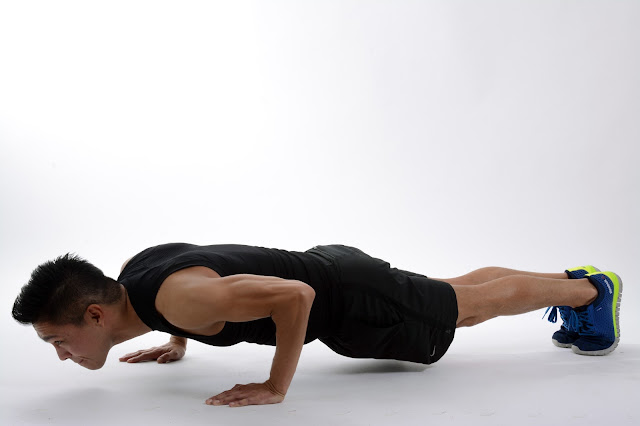Barhitting for Size
I read your article about ectomorphs on Bodybuilding.com. I train upper and lower body twice a week. I rest on Wednesday, Saturday and Sunday. I'd like to know if I should train even more frequently or if this routine was good?
I'm not a true beginner as I used to do barhitting before coming into weightlifting. Yes, I'm skinny but with my old bodyweight workout and good diet, I could put on mass as much as 2 pounds in 2 weeks. I was wondering if I could get better results with weightlifting.
Thanks.
Cheers,
Ludovic
My Answer: You answered your own question. It's really just a matter of diet. Eat a lot of food and strength train in some fashion (whether it's barhitting or weightlifting) and you will gain muscle.
For those of you who aren't familiar with the term "barhitting," it is simply body weight exercises, most of them performed on bars (pull-up bars, parallel bars). It is old school calisthenics: muscle ups, handstand pushups, front levers, planches, etc.
Now what weight training offers that is lacking in barhitting is the ability to target a lagging muscle group. With gymnastics, you have to exercise total body control. You may do handstand pushups for shoulders, but when you perform the exercise (or any barhitting exercise for that matter) you have to tense and flex your entire musculature.
Normally total body control is a good thing. Real world power is based on total body control. But from a bodybuilding standpoint, it makes it difficult to target and build a particular muscle group when your nerve force is being diverted to the rest of the body.
Let's use handstand pushups as an example. Handstand pushups work the shoulders and triceps, but in order to do them you have to maintain your spine and legs over your base of support. Your nervous system has to do different things: isometrically contracting the body while pressing.
Although you can never fully isolate a muscle group, bodybuilding requires that you target or stress a particular muscle group more than the others. Most of your nerve force is directed at maximally contracting one particular muscle group in order to fully grow that particular muscle group.
So if your posterior deltoids are lagging in size, then working out with weights can help in this regard, because you can target that muscle with side lying rear flyes. The posterior delts bear the brunt of the work with minimal help from the lats and teres major muscles.
The other thing about gymnastics exercises is many of the moves are static. Planches, for example, require you to hold your body parallel to the ground on your hands. A very tough and impressive strength feat.
The thing is that your muscles grow on a full range of motion. You grow more on full range squats than half squats, because you have to push for a longer distance. Isometric contractions, or simply holding a weight such as your body, produce great muscle tone and density but not as much muscular hypertrophy or size. The barhitting exercises that produce the most size are the ones that require movement in a full range of motion for the targeted muscle group: pull-ups, chin-ups, dips, muscle-ups, hanging leg raises, dragon flags, one-legged squats, etc.
Bottom line: Eat more food to gain more muscle. Use barhitting exercises with a full range of motion as opposed to isometric holds. Add in barbell and dumbbell exercises that complement the barhitting exercises. Gymnastic exercises develop impressive upper body muscle, but complement them with some leg exercises. One-legged body weight squats are fine, but they will only take you so far, especially if you can do a high number of reps. Stick with exericses and weights that keep you in the 6-10 range, and you will be fine.
I'm not a true beginner as I used to do barhitting before coming into weightlifting. Yes, I'm skinny but with my old bodyweight workout and good diet, I could put on mass as much as 2 pounds in 2 weeks. I was wondering if I could get better results with weightlifting.
Thanks.
Cheers,
Ludovic
My Answer: You answered your own question. It's really just a matter of diet. Eat a lot of food and strength train in some fashion (whether it's barhitting or weightlifting) and you will gain muscle.
For those of you who aren't familiar with the term "barhitting," it is simply body weight exercises, most of them performed on bars (pull-up bars, parallel bars). It is old school calisthenics: muscle ups, handstand pushups, front levers, planches, etc.
Now what weight training offers that is lacking in barhitting is the ability to target a lagging muscle group. With gymnastics, you have to exercise total body control. You may do handstand pushups for shoulders, but when you perform the exercise (or any barhitting exercise for that matter) you have to tense and flex your entire musculature.
Normally total body control is a good thing. Real world power is based on total body control. But from a bodybuilding standpoint, it makes it difficult to target and build a particular muscle group when your nerve force is being diverted to the rest of the body.
Let's use handstand pushups as an example. Handstand pushups work the shoulders and triceps, but in order to do them you have to maintain your spine and legs over your base of support. Your nervous system has to do different things: isometrically contracting the body while pressing.
Although you can never fully isolate a muscle group, bodybuilding requires that you target or stress a particular muscle group more than the others. Most of your nerve force is directed at maximally contracting one particular muscle group in order to fully grow that particular muscle group.
So if your posterior deltoids are lagging in size, then working out with weights can help in this regard, because you can target that muscle with side lying rear flyes. The posterior delts bear the brunt of the work with minimal help from the lats and teres major muscles.
The other thing about gymnastics exercises is many of the moves are static. Planches, for example, require you to hold your body parallel to the ground on your hands. A very tough and impressive strength feat.
The thing is that your muscles grow on a full range of motion. You grow more on full range squats than half squats, because you have to push for a longer distance. Isometric contractions, or simply holding a weight such as your body, produce great muscle tone and density but not as much muscular hypertrophy or size. The barhitting exercises that produce the most size are the ones that require movement in a full range of motion for the targeted muscle group: pull-ups, chin-ups, dips, muscle-ups, hanging leg raises, dragon flags, one-legged squats, etc.
Bottom line: Eat more food to gain more muscle. Use barhitting exercises with a full range of motion as opposed to isometric holds. Add in barbell and dumbbell exercises that complement the barhitting exercises. Gymnastic exercises develop impressive upper body muscle, but complement them with some leg exercises. One-legged body weight squats are fine, but they will only take you so far, especially if you can do a high number of reps. Stick with exericses and weights that keep you in the 6-10 range, and you will be fine.



Comments